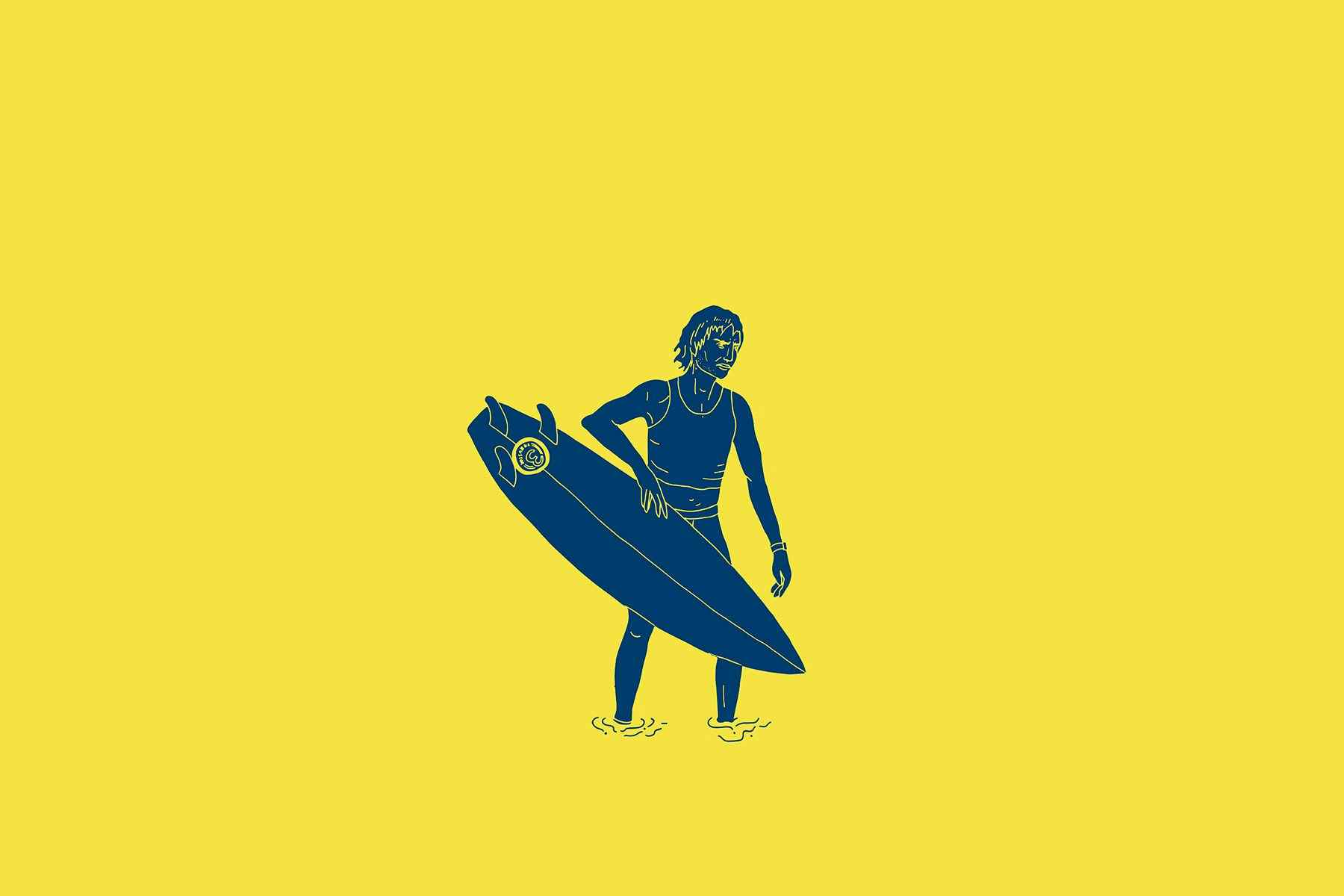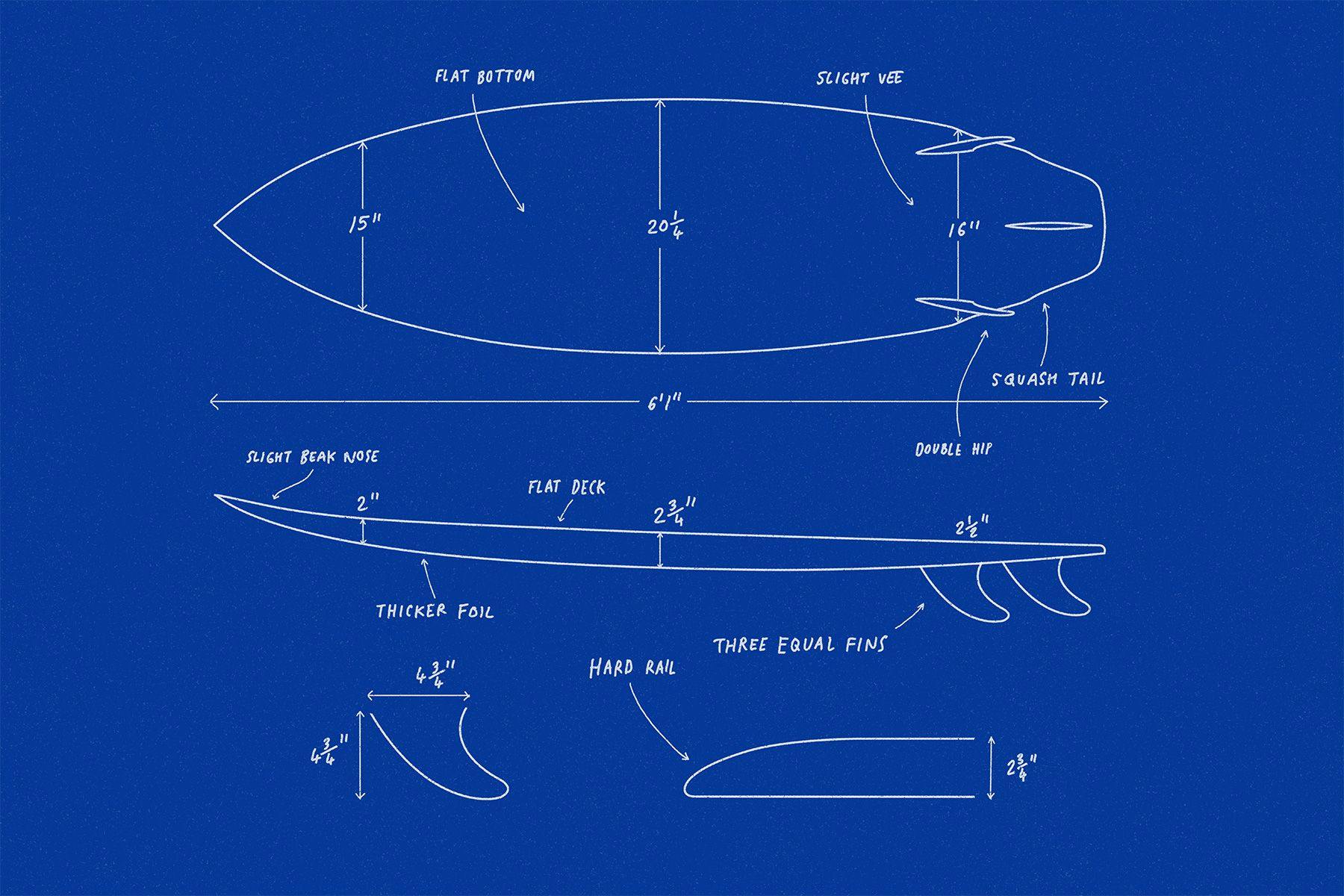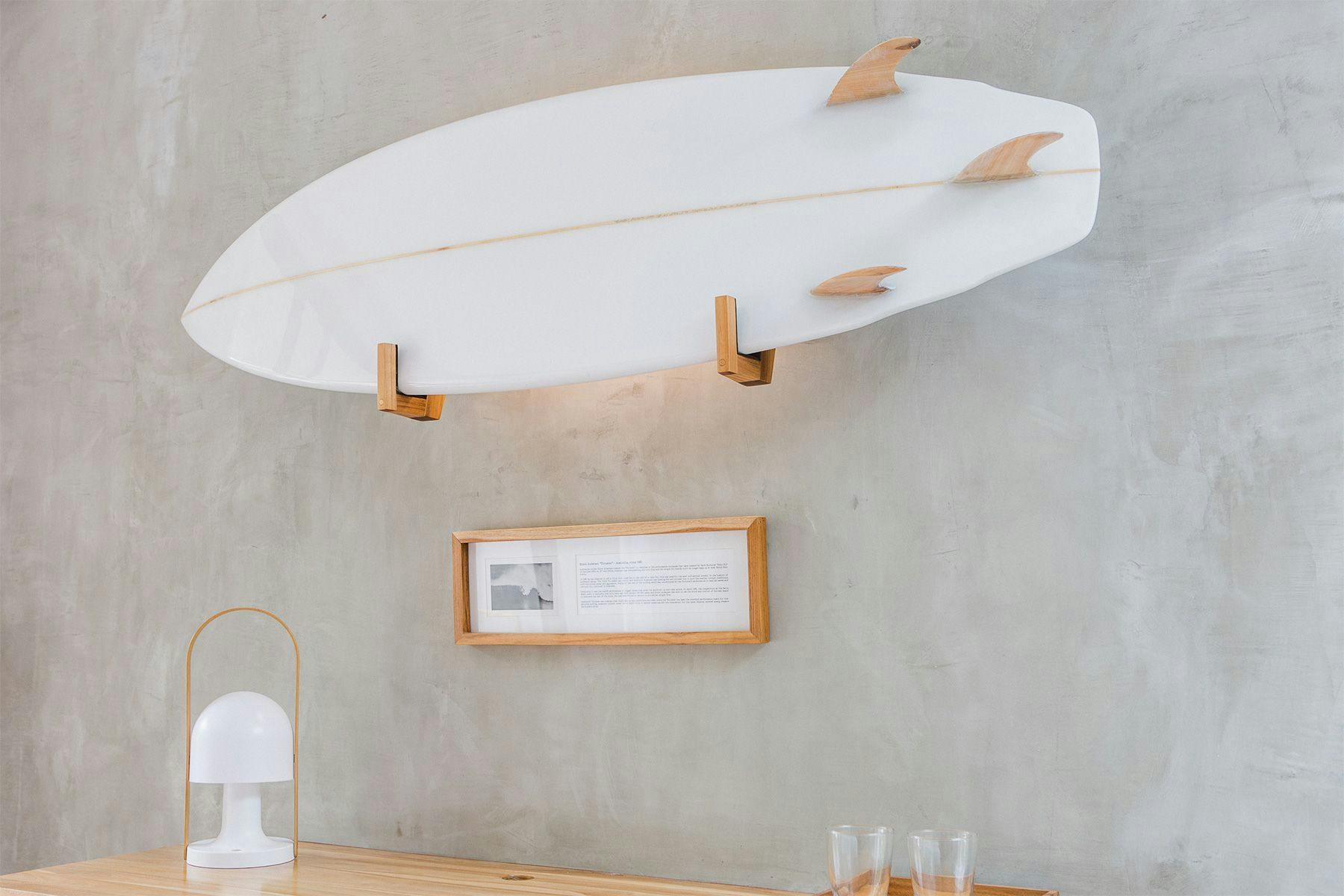SurfboardsThe History of Surfboard Design: Simon Anderson and The Thruster

Conceived in October 1980 after an encounter with fellow-shaper Frank Williams, Australian Simon Anderson created the Thruster in the beginning of 1981 by squaring-off the tail and adding a third/central fin to what was essentially a twin-fin surfboard. Nowadays ubiquitous in every line-up, the concept of a three-finned surfboard struggled to gain acceptance from a broader audience at first. But, as Anderson refined the design and later put it to a test in front of thousands of surfers at the 81’ Bells and Pipe Masters, the Thruster’s potential to push the limits of high-performance surfing became clear, and a new era in surfboard design and wave riding began.
The Historical Context
In the decade following 1967’s Shortboard Revolution, shortboards (now a distinct category from “longboards”) took the spotlight in terms of design developments and with them the never-ending quest for higher performance in wave riding continued. Progressive shapers like Dick Brewer and the Campbell brothers had worked on multi-fin models in the early 70’s, but without widespread success. As the end of the 70s approached, a division amongst the shortboard community had formed: surfers either advocated for “classic” single-fins or “more progressive” Mark Richards-style twin-fins.
Australian surfer Simon Anderson happened to be an advocate of the single-fin. However, due to his powerful physique and the fact that more small-wave surf venues were being added to the fledgling world tour circuit, he was also compelled to find alternative ways to get more out of his surfboards. Anderson’s friend and fellow-Narrabeen local, Frank Williams, had been experimenting with a stability-inducing third fin in the centre of his twin-fin board. Once Anderson caught sight of Williams’ board and understood the concept, he went ahead and shaped his own version of a tri-fin, which turned out to be the answer to his prayers.
In general, surfers of the time were sceptical about innovations – especially since both single and twin-fin models were readily available and functional. But when Anderson’s version of the three-fin setup proved itself in action, everyone wanted a piece of the pie. Less than two years after its inception, the Thruster (aka tri-fin) started to be reproduced across the globe.
Why Was This Development Necessary?
Much like Steve Lis and his Fish, when Simon Anderson created the thruster he simply intended to solve his own surf-needs – which were directly related to his body shape (6’3 and 200lbs) and powerful surfing style. Anderson disliked twin-fins for their susceptibility to slide off-track, and although a single-fin aficionado, he didn’t deem this fin setup to be suitable for the small-wave locations the world tour started to visit. Hence, Anderson’s tri-fin model aimed to provide the speed and manoeuvrability of a twin-fin (which were imperative for small-wave competitive surfing) but with extra stability in order to hold through harder and more powerful turns. Whilst his prime concern was to improve performance in small waves, Anderson also sought progression and saw in the Thruster a way to streamline surfing in general through the design’s capacity to maintain speed throughout turns, thus solving an issue many didn’t necessarily know to be there in the first place. In the end it was the boards performance at a maxed out Bells Beach that really sold the world on the design, with the twinfins unable to hold in the big surf, and the pin-tailed single fins only able to draw their long, classic lines, Simon Anderson was able to attack the wave in a way that no one else could come close to.

Who Was Involved?
Sydney-born and Narrabeen-bred, Simon Anderson’s relationship with water began at an early age by swimming every morning with his father at Collaroy rock pool. He “officially” transitioned to surfing when he turned 13. A wave-riding prodigy, Anderson left school aged 16 and got a job fixing dings at Shane Surfboards, who was also his sponsor. His competitive career boomed the following year when he won the Sydney title and the Australian Junior Championships held at Bells Beach. Meanwhile, he’d been bumped-up to apprentice shaper at Shane Surfboards under the guidance of Terry Fitzgerald and, also influenced by friend Frank Latta, began shaping his own designs aged 18 years old. He founded his own label (Energy Surfboards) three years later. A relatively reserved character, Anderson had won several World Tour events before becoming the focus of attention after creating and promoting his new tri-fin design – known as the Thruster – on which he won the 1981 Bells and Pipeline Masters contests. Unpatented, the Thruster was replicated all over the world, replacing the twin-fin model as the go-to surfboard design and placing Anderson as one of the most influential surfer-shapers in history.
Design Details
Unlike previous tri-fin experiments, the Thruster setup featured three fins of the same size and shape, which were smaller than conventional single and twin fins of the day. The lateral fins, which were foiled, were placed roughly one foot from the back end of the board with their convex side facing the rail and their leading edge turned inwards slightly (toe-in). The double-foiled central fin sat three inches from the tail and running along the stringer, forming a triangular arrangement with the side fins. Essentially, this integration of design features from both single and twin-fin models endowed the Thruster with their performance qualities: gifting it the speed and manoeuvrability of a twin-fin but with the down-the-line hold and stability through turns of a single-fin. With more drive and stability, surfers could now manoeuvre up and down the face and connect turns without sliding the tail out or loosing too much speed through turns – a development that opened the doors to exploring more of the lip and beyond. Conversely, the extra fin in the middle created drag when riding on a straight line, so in order to make the most out of a Thruster it was almost mandatory for surfers to arc their way down the face of the wave, constantly engaging a rail.
Another fundamental component of the original Thruster model was the pointed nose adapted from Australian shaper Geoff McCoy’s “no-nose/needle-nose” model, which reduced the Thruster’s surface area on the foremost section of the board while increasing the curve of the planshape, counterbalancing the stiffness of a fin-laden tail. Besides the fin setup and pulled-in nose outline, the Thruster’s other design features were relatively unremarkable in terms of design development – a flat deck, a deep vee just ahead of the fins, low boxy rails, low rocker, and a wide point set further back than many of its predecessors (e.g. Brewer’s mini gun).
At the time, adding an extra fin to a surfboard may not have seemed like a revolutionary move, but the extent to which it allowed surfers to tap into additional speed and redirect their boards with more ease revolutionised surfing and the Thruster has been the dominant fin configuration ever since.
Specifications
Avg Minimum Avg Maximum Length 5’9” 6’1”
Width
Nose 12” Midpoint 19” 20 ¼” Tail 15 ½” Thickness 2 5/16” 2 ¾” Weight or Volume
